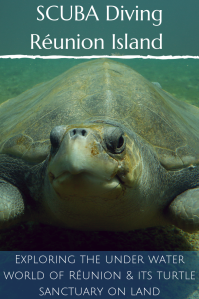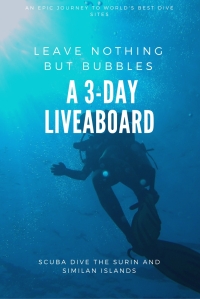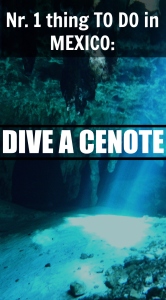Réunion Island is not only a mountainous paradise. Bathed by the Indian Ocean, its warm waters are home to many species including endangered sea turtles. Dipping your head into the turquoise waters of the lagoon will make you feel like you plunge into a colorful aquarium. Get deeper and SCUBA dive to get up close and personal with its diverse marine life and especially its fascinating sea turtles.
As our boat leaves the small harbor offering a fantastic view on the slopes of the Maïdo, I am startled by a scream: “turtle!” As I look just ahead of our embarkation on which divers are gearing up and assembling their BC’s (Buoyancy Compensators) to their dive tanks, I spot the small head surfacing to catch some air. This dive outing is starting pretty well and I cannot wait to be immersed to observe some more!
I assemble my gear together. I double check that my regulators are well connected. I note the air pressure in the tank. It does not take long before we reach the buoy marking the diving spot. I zip up my wetsuit, put my fins and mask on and load the BC on my shoulders. After a briefing and buddy check, our small team back flips into the Indian Ocean.
As we slowly descent equalizing the pressure in our ears, I look around. In the deep blue, I guess another turtle in the distance graciously floating towards the surface. Our dive takes us under natural arches where morays and Spanish dancers cohabit. Back above the corals, a rainbow of tropical fish dot the ocean. An emperor angel fish leads us to a bright orange nudibranch, passing by some cheeky triggerfish and some clownfish hiding in their anemone on the way. Out of a narrow canyon, a green turtle appears, feeding on a coral. Not disturbed by our presence, it keeps eating before swimming away. Amongst many other species, it is no less than six sea turtles that we will see during only one dive.
Reflecting back the next day at Kélonia, the observatory of sea turtles in Saint Leu, this is hardly believable. According to the texts by the first inhabitants of Réunion, in the 17th century they could not sleep on the beach as they would be sanded in by so many turtles. However they fast became at risk. As many other usage, the turtles were loaded on sailboats kept alive for months and eaten to fight scurvy. Their numbers declined drastically. With their skin, scales, meat and eggs being valued, by the end of the 20th century, only one track of turtle was found on the beach every 10 years on the island. Thanks to a global consciousness movement and passionate and dedicated scientists, turtle conservation programs have given the prehistoric species a small break.
During our visit of Kélonia, its director Stéphane Ciccione explains: “we thought that only the magnetism of the Earth was used by sea turtles to orientate. After years of studies, we have found out that scents are a factor for them to find the beach to lay their eggs. With only 0.01% of original vegetation left along the coast in Réunion we realized that turtles could not find their way back to the beach. We restored 15 kilometers of coast by planting specific trees. Within five years we had the first two females laying eggs here!”
The situation is much better than it used to be. Turtle spottings are many and within thirty years only their image has gone from a functional animal to a symbolic one that deserves to be protected. However, walking past the rehabilitation tanks of Kélonia is a reminder that much more work remains to be done. Beyond a museum, the observatory is also a rehabilitation center for injured turtles. Regularly, Stéphane and his team get calls to signal a turtle entangled in nylon – like Ophélie the hawksbill turtle who is swimming in circles in the tank and will never be released as its limb had to be amputated. Or often, the captain of a fishing boat calls as a turtle was fished and has a hook deep in its neck or throat – in the best case after a surgery and several weeks of rehab a release is possible. Everything has be done to ensure the greatest success rate: after stabilizing in their individual tanks, recovering turtles are transferred to the main tank which water is directly pumped in the nearby lagoon. Hardly filtered, the whole ecosystem comes with it (fish eggs, algae…) ensuring the best possible adaptation before being released in the ocean.
If the reasons why the turtles are in rehab differ, the common denominator is the plastics found in their excrements (or unfortunately in their stomach during autopsies). Stéphane goes through the stomach content found in only one turtle: soda bottle lids of brands sold in South East Asia, pieces of plastic bags, ear cleaners, a condom, small pieces of colorful plastics of various origins… All this garbage often leads to slow and painful deaths.
When I surfaced back after our safety stop, I was so grateful for such a wonderful dive and observing these fascinating prehistoric animals from up close and in the wild. One can only hope that humans will be able to save these species that have been roaming world’s oceans and beaches freely way before we even existed. If we have come a long way already thanks to initiatives such as Kélonia the battles against plastic and habitat loss need to be fought, and we can all undertake action on a daily basis.
Text: Marcella van Alphen
Photographs: Claire Lessiau
Travel tips:
- Some shark attacks have been reported on Réunion Island. Swimming is safe in the lagoon that is naturally protected by the reef and in the natural pools. SCUBA divers are not at risk when it comes to sharks (and spottings are rare). Surfing though is dangerous and forbidden for the time being.
- To learn more about turtles, make sure to visit the excellent Kélonia. FYI, your entrance ticket finances its conservation and rehabilitation work.
- To dive in Réunion, refer to Aquabulle in Saint Leu. With regularly renewed and well maintained gear, its passionate and professional staff will make sure you make the most of your dive!
- We recommend you to stay at Villa Delisle, a very comfortable 4-star hotel in Saint Pierre and your perfect base to enjoy Réunion.
- Check out this interactive map for the specific details to help you plan your trip and more articles and photos (zoom out) about the area! Here is a short tutorial to download it.
-
Like it? Pin it!

What esle to do in Reunion Island: just click on the inspiring images:
For more diving adventures, click on the images below:
































This looks exquisite. I love diving with turtles and I’m happy to read about the conservation efforts.